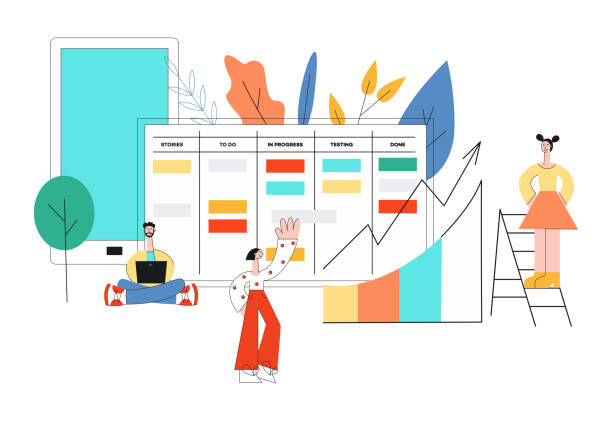Introduction to SEO-Optimized Website Design and Its Importance

In today’s digital world, where competition for visibility intensifies daily, having a website is merely the first step.
What sets you apart from a multitude of websites is the ability to be seen in search engines.
This is where the concept of #SEO_optimized_website_design reveals its importance.
SEO, or Search Engine Optimization, is a set of techniques and strategies used to improve your website’s #ranking in the organic search results of Google, Bing, and other engines.
An SEO-optimized website design means that your website is built from the ground up with search engine ranking factors in mind.
This approach ensures that your site is accessible, understandable, and relevant to search engine crawlers.
The importance of this lies in gaining #organic_traffic; traffic that comes to your site for free through search and typically has higher quality and conversion rates because users were actively looking for your content.
Traditionally, many businesses only consider optimizing their website for search engines after its design is complete.
This approach often means incurring additional costs and more time to revise the structure and content.
However, with an SEO-optimized website design approach, all technical, content, and user experience aspects are considered from the outset, with the goal of achieving the best possible ranking in search results.
This includes selecting the appropriate platform (such as WordPress with SEO-focused plugins), a friendly URL structure, website code optimization, and the creation of valuable and targeted content.
Without an optimized design, even the best content might never be seen by the target audience.
Imagine setting up a store with the best products, but no one knows it exists; this is exactly what happens to a website without SEO.
SEO-optimized website design not only aids in better ranking but also enhances user experience, which itself is a crucial factor in Google’s new algorithms.
Search engines increasingly emphasize user satisfaction.
A website that loads quickly, has easy navigation, and offers relevant, high-quality content is appealing to users and receives higher scores from search engines.
Investing in a website designed from the ground up based on SEO principles means investing in the long-term success and sustainability of your online business.
This includes choosing the right structure, proper use of keywords, optimizing page load speed, and many other aspects that will be explained in detail later.
Having an SEO-centric website is an excellent competitive advantage that can make the difference between being seen and being forgotten, enabling businesses to find their potential customers at the right time with accurate information.
Are your e-commerce site visitors leaving before making a purchase? Worry no more! With Rasawweb’s professional e-commerce website design services, solve the problem of converting visitors into customers forever!
✅ Significant increase in conversion rates and sales
✅ Unparalleled and engaging user experience
⚡ Contact us now for a free consultation!
Key Principles in On-Page SEO-Optimized Website Design
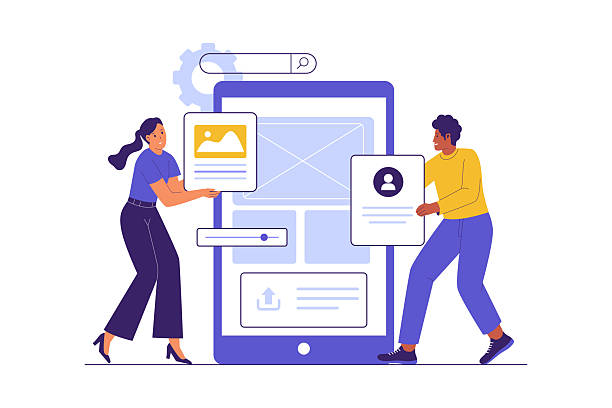
When it comes to SEO-optimized website design, On-Page principles play a pivotal role.
These principles refer to all elements directly on your website that you have complete control over.
The first and perhaps most important element is the Title Tag.
The title tag should include the page’s main keyword and be engaging and informative enough to capture users’ attention in search results.
Its optimal length is usually between 50 and 60 characters and it should be written to be both optimized for search engines and enticing for users to click.
The Meta Description, which appears below the title tag in search results, while not directly influencing rankings, plays a crucial role in click-through rate (CTR).
These descriptions should provide an engaging and persuasive summary of the page’s content and include a Call to Action.
Using Heading Tags from H1 to H6 is essential for organizing content and improving readability for both users and search engine crawlers.
Each page should only have one H1 tag, which should include the main keyword and serve as the page’s primary title.
Other headings should be used for subheadings to give the content a logical structure and help search engines understand the information hierarchy.
High-quality and unique content is the backbone of any SEO-optimized website design.
Content must be valuable, comprehensive, and relevant to target keywords.
It should not only answer users’ questions but also be in-depth and specialized.
Keyword Density should be natural, and keyword stuffing, which is penalized by Google, should be avoided.
Using LSI (Latent Semantic Indexing) keywords and synonyms adds semantic richness to the content and helps search engines better understand the overall topic of the page.
Internal Linking is of great importance.
It helps distribute “authority” (Link Equity) throughout the site and assists search engines in understanding your website’s structure.
Internal links should be used with appropriate and relevant Anchor Text.
Additionally, using Alt Text for images not only aids in image SEO but also makes your website more accessible for users with visual impairments, which is a crucial factor in Web Accessibility and SEO.
Image optimization (size, format, and compression) is also vital for page load speed.
Adhering to these principles in the SEO-optimized website design process ensures that every page of your website is optimized as effectively as possible for search engines, not only increasing your chances of visibility but also providing a positive user experience for visitors.
Optimizing Speed and User Experience in SEO-Optimized Website Design
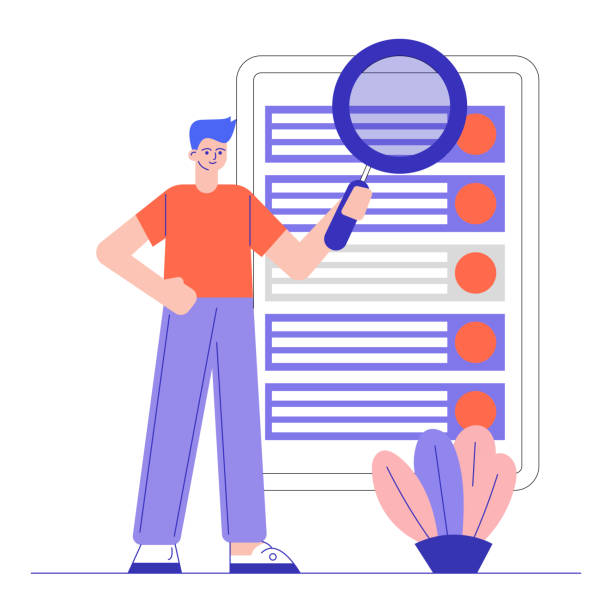
Website speed and User Experience (UX) are two critical factors that today significantly impact SEO ranking.
Google has repeatedly emphasized that page load speed and how users interact with a website are among the important factors in its ranking algorithms.
An SEO-optimized website design should never sacrifice speed for aesthetics.
Today’s internet users have little patience, and according to research, if a page doesn’t load in less than 3 seconds, many will abandon the website.
This early abandonment (high Bounce Rate) sends negative signals to search engines and severely affects your site’s ranking.
To improve speed, there are numerous techniques, including image compression, browser caching, reducing HTTP requests, and optimizing and minifying CSS and JavaScript codes.
Google’s PageSpeed Insights tools and GTmetrix can help identify speed weaknesses and offer suggestions for improvement.
Furthermore, choosing a reputable and fast hosting provider plays a very important role in server response time and, consequently, the overall site speed.
Alongside speed, User Experience (UX) is also of high importance.
Google increasingly emphasizes Core Web Vitals (including Largest Contentful Paint, First Input Delay, Cumulative Layout Shift), which directly relate to the speed and visual stability of the site during user interaction.
A website with an attractive visual design, easy navigation, and accessible content encourages users to spend more time on the site and view more pages.
This positive interaction, such as Dwell Time and the number of pages visited, sends positive signals to search engines.
Responsive Design, which optimizes the site for all devices including mobile and tablet, is an inseparable part of UX and, consequently, SEO.
Clear and logical navigation, use of readable fonts, minimalist design, and the absence of intrusive pop-ups or overwhelming advertisements all contribute to improving user experience.
Ultimately, an SEO-optimized website design should be optimized for both search engines and humans, as these two are complementary in the long run.
Paying attention to small details in UX can make a big difference in your website’s ranking and overall success.
| Website Speed Factor | Explanation and Impact on SEO |
|---|---|
| Image Compression | Reducing image file sizes without significant quality loss (using formats like WebP), decreasing page load time, and improving Core Web Vitals. |
| Browser Caching | Storing static files in the user’s browser for subsequent visits, significantly improving speed on repeated site visits. |
| Reducing HTTP Requests | Combining CSS and JS files, using image sprites, and lazy loading to reduce the number of requests to the server and improve performance. |
| Optimizing CSS/JS Codes | Minification and concatenation of files to reduce their size and number, removing redundant and unused code. |
| Server Response Time | The faster the server (hosting) responds to requests, the better the initial site load speed, which impacts First Contentful Paint. |
The Role of Content in SEO-Optimized Website Design and Audience Engagement

Content is king; this phrase holds truer than ever in the world of SEO and SEO-optimized website design.
No website, however technically optimized, can succeed in attracting an audience, increasing credibility, and ultimately achieving a good ranking without high-quality and relevant content.
Content must be valuable, relevant, comprehensive, and unique to appeal not only to search engines but also to users, encouraging them to stay and interact with your site.
In the SEO-optimized website design process, the content strategy must be shaped from the very beginning.
This strategy includes identifying target keywords (through keyword research), understanding User Intent behind each search, and producing content that answers their questions and fully addresses their needs.
Content diversity is also very important.
Educational content (such as step-by-step tutorials), comprehensive guides, specialized and analytical articles, industry-related news, infographics, videos, and even entertaining content indirectly related to your field of work can all contribute to attracting traffic, increasing social sharing, and improving SEO.
The crucial point is that content must have high readability.
Using short paragraphs, clear subheadings, bulleted or numbered lists, quotes, and high-quality images makes reading long content easier for users and enhances the user experience.
Additionally, Evergreen Content, which does not lose its value over time, can continuously drive organic traffic to your site and be a stable source of visitors.
This type of content typically includes basic tutorials, comprehensive guides, and answers to fundamental questions that are always relevant.
Furthermore, regular content updates and the publication of new content signal to search engines that your website is active and dynamic.
This gives search engines a signal that your site is a fresh and authoritative source and can significantly help improve your ranking.
Using LSI (Latent Semantic Indexing) keywords and synonyms also helps search engines better understand the overall topic of the page and prevents excessive keyword stuffing of primary keywords.
A successful SEO-optimized website design is not possible without a strong content strategy.
Content should engage users, encourage them to share, and ultimately lead to a desired action (such as a purchase, newsletter subscription, or contact).
Investing in quality content production is one of the best investments for long-term SEO.
Are you dissatisfied with the low conversion rate of visitors to customers on your e-commerce site?
With professional e-commerce website design by Rasawweb, solve this problem forever!
✅ Increase visitor-to-customer conversion rates
✅ Create an excellent user experience and build customer trust
⚡ Get a free consultation
Responsive Design and Mobile-Friendliness for SEO
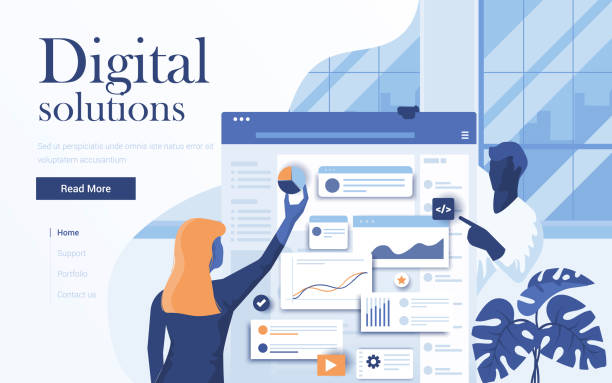
In the current era, with increasing mobile phone usage for internet access, Responsive Design and Mobile-Friendliness are not just an advantage, but an absolute necessity for any SEO-optimized website design.
Statistics show that over half of global web traffic originates from mobile devices, and this trend continues to grow.
Since 2018, Google has adopted a Mobile-First Indexing approach, meaning it considers the mobile version of your website as the primary version for indexing and ranking.
Therefore, if your website does not perform well on mobile devices, its ranking in search results will be severely affected, and you might even be deprived of visibility in mobile searches.
Responsive design means that your website is built to adapt to any screen size (from desktop to tablet and mobile) and provide an optimal user experience.
This includes automatically adjusting the size of images, fonts, columns, and page element layouts so that content is always readable and accessible.
The benefits of this approach are not limited to SEO alone; a responsive website has a lower bounce rate because users will have a positive experience regardless of the device they use, and are less likely to leave the site.
Furthermore, maintaining a responsive website, both technically and in terms of content, is much easier than having two separate versions (desktop and mobile), which simplifies its management and updates.
This translates to savings in time and cost.
To ensure your website is mobile-friendly, you can use Google’s Mobile-Friendly Test tool, which identifies weaknesses and provides suggestions for improvement.
Important factors for mobile-friendliness include: appropriate font sizes for easy readability on small screens, sufficient spacing between clickable elements (like buttons and links) to prevent accidental taps, and fast loading times on mobile networks (which are usually slower than wired networks).
Images and videos should be optimized to load quickly on mobile devices and not consume excessive bandwidth.
SEO-optimized website design is incomplete without considering the mobile experience.
Your website should be designed so that mobile users can easily navigate it, read content, fill out forms, and access the information they need.
It is this attention to detail that elevates your website in search results and drives targeted, high-quality traffic towards it.
Information Architecture and URL Structure in SEO-Optimized Website Design
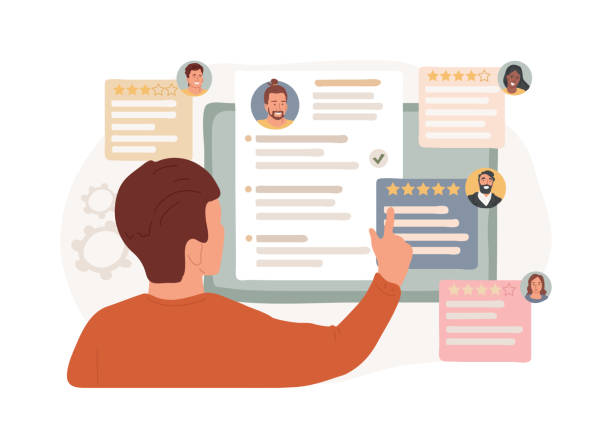
Information architecture and URL structure are two fundamental elements in the SEO-optimized website design process that are often overlooked, but have a profound impact on your website’s crawlability, indexing, and ultimately, its ranking.
Information architecture refers to how your website’s content and pages are organized and structured, making them understandable and logical for both users and search engine crawlers.
A clear, hierarchical structure helps search engines understand the relationships between different pages and evaluate the importance of each page.
This means logical categorization, using simple and understandable navigation (such as main menus, breadcrumbs, and internal links).
In an SEO-optimized website design, the fewer clicks it takes to access a page from the homepage, the more desirable it is for SEO.
This website “depth” should be minimized, so that your main and important pages are accessible within a few clicks from the home page.
Also, preventing orphan pages, which have no links pointing to them and are therefore undiscoverable by crawlers, is very important.
The URL structure is also of high importance.
SEO-friendly URLs should be short, descriptive, human-readable, and include target keywords.
It is essential to avoid long URLs containing incomprehensible characters, random numbers, or dynamic parameters.
For example, instead of yoursite.com/?p=123&cat=45&date=2023, a URL like yoursite.com/blog/seo-friendly-design-guide is much more SEO-friendly and easier for users to remember.
Using a hyphen (-) to separate words in URLs instead of an underscore (_) or space is recommended, as search engines better recognize hyphens as word separators.
Additionally, using lowercase letters in URLs and keeping them consistent (canonicalization) is very important to prevent Duplicate Content.
An SEO-optimized website design adjusts its URL structure to be not only optimized for search engines but also understandable and memorable for users.
Strong information architecture and optimized URLs, together, provide a solid foundation for your website’s SEO success, allowing search engines to find, crawl, and index your content more efficiently, and consequently, display your relevant pages to relevant users.
Advanced Tools and Techniques in SEO-Optimized Website Design
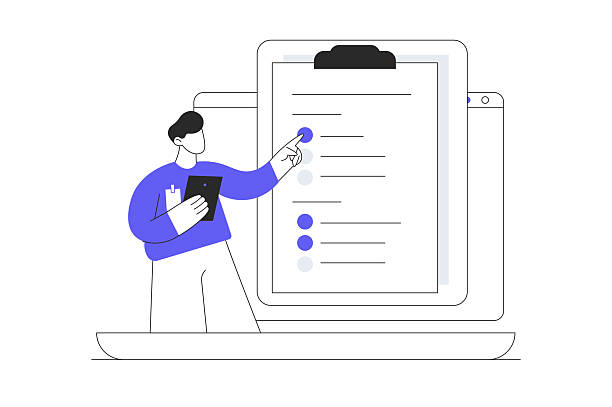
After adhering to the basic principles, to achieve maximum potential in SEO-optimized website design, one must turn to more advanced tools and techniques.
One of the most powerful among them is Structured Data or Schema Markup.
These codes help search engines better understand your website’s content and display it in richer forms (Rich Snippets) in search results, which significantly helps increase the click-through rate (CTR).
For example, you can mark up information such as product star ratings, article author, events, Frequently Asked Questions (FAQ), or recipes with schema to appear more prominently in search results.
XML Sitemaps are a vital tool for guiding search engines in crawling your website.
They provide search engines with a list of all important pages on your site, ensuring that no page is missed, especially for large sites or those with complex internal linking.
The Robots.txt file also tells search engines which parts of your site they can crawl and which parts should not be indexed.
Proper use of this file is essential to control crawler access to sensitive pages or duplicate content (such as login pages or user panels), ensuring your Crawl Budget is used optimally.
Google Search Console and Google Analytics are essential tools for any SEO-optimized website design.
Search Console helps you identify and fix crawling, indexing, and website performance issues in search results (such as keyword impressions, click-through rate, and average ranking).
This tool provides valuable information about the keywords users use to find you, incoming and outgoing links, and potential site errors.
Google Analytics also provides deep insights into user behavior on your site (such as dwell time, bounce rate, navigation paths, and conversions), which is very useful for improving user experience and content strategy.
Keyword research tools like Ahrefs, Semrush, Google Keyword Planner, and Google Trends are also essential for identifying new keyword opportunities, competitor analysis, and examining search trends in an SEO-optimized website design.
These tools allow you to adjust your strategy based on real data and leverage the full potential of SEO.
| SEO Tool | Main Application in SEO-Optimized Website Design |
|---|---|
| Google Search Console | Monitoring search performance, identifying crawl errors, checking index status, and improving site visibility. |
| Google Analytics | Analyzing user behavior, traffic sources, dwell time, bounce rate, and conversion rates for user experience optimization. |
| Schema Markup Generator | Generating structured data codes (JSON-LD) to enhance display in search results (Rich Snippets) and improve content understanding by search engines. |
| XML Sitemap Generator | Creating a sitemap to help search engines find and crawl all important pages of the website. |
| PageSpeed Insights / GTmetrix | Analyzing page load speed, Core Web Vitals, and providing technical suggestions for performance optimization. |
| Keyword Research Tools (e.g., Ahrefs, Semrush) | Identifying keywords with high search volume and suitable competition, analyzing competitor keywords, and finding new opportunities. |
Common Challenges and Questions in SEO-Optimized Website Design
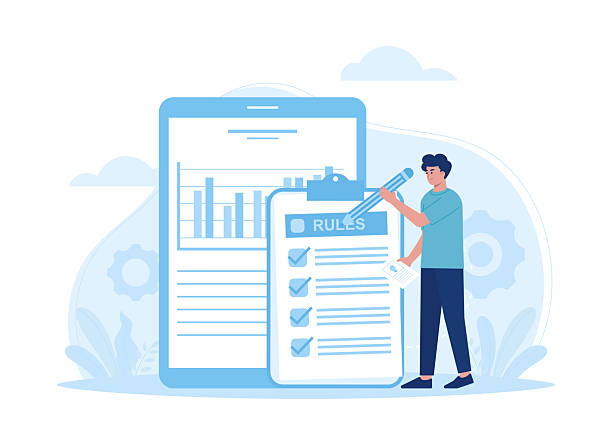
SEO-optimized website design is a winding path accompanied by numerous challenges and questions.
One of the most significant challenges is the continuous changes in Google’s algorithms.
Google regularly updates its algorithms, and what is effective for SEO today might not be effective tomorrow.
This necessitates continuous learning, monitoring SEO news, and flexibility in SEO strategies.
For example, Core Updates can significantly impact website rankings and require deep analysis and quick adaptation.
A question many business owners ask is: “Is page load speed more important, or content quality?” The answer is that both are extremely important, and a successful SEO-optimized website design must strike a balance between the two.
High speed without valuable content won’t retain users, and excellent content without adequate speed won’t even be introduced to users by search engines.
Duplicate Content is another common challenge that can harm your site’s ranking and even lead to Google penalties.
This problem can arise from different versions of a URL (with www and without www, with http and https), or copying content from other sites without proper attribution.
The solution is the correct use of the canonical tag (to specify the original version of the content) and 301 redirects to guide traffic from old pages to new ones.
Broken Links also disrupt user experience and send negative signals to search engines.
Regularly checking and fixing these links, both internal and external, is crucial.
Another question is, “Is Black Hat SEO worth the risk?” The emphatic answer is “No.”
Black Hat techniques such as cloaking, keyword stuffing, and unnatural link-building might yield short-term results, but in the long run, they lead to heavy Google penalties, reduced rankings, and even complete removal from search results, which is very difficult and costly to recover from.
Finally, intense competition in many industries is a major challenge.
Even with an excellent SEO-optimized website design and a strong strategy, reaching the first page of Google for highly competitive keywords can be time-consuming and difficult.
This is where competitor analysis, finding less competitive niches, or focusing on Long-Tail keywords with lower search volume but more precise user intent becomes important.
SEO-optimized website design is a continuous process that requires patience, experimentation, data analysis, and adaptation to new conditions to achieve sustainable results.
Understanding these challenges and being prepared to address them is a crucial part of your SEO strategy and online success, helping you stay on the right track.
Is your e-commerce site ready to attract maximum customers and increase sales? Rasawweb transforms your online business with modern and efficient e-commerce website designs.
✅ Increased speed and improved SEO
✅ Excellent user experience on mobile and desktop⚡ Get a free e-commerce website design consultation from Rasawweb!
The Future of SEO-Optimized Website Design and Upcoming Trends

The world of SEO-optimized website design and search engine optimization is constantly evolving, and predicting its future requires close monitoring of technological changes and user behavior.
To maintain a position in search results and ensure website visibility, it’s crucial to pay attention to future trends and adjust your strategy accordingly.
One of the most important upcoming trends is the growing role of Artificial Intelligence (AI) in SEO.
Google’s algorithms like RankBrain, BERT, and now SGE (Search Generative Experience) use AI to better understand user intent, natural language, and website content.
This means a greater emphasis on high-quality, natural, comprehensive content that answers real user questions, not just keyword stuffing.
Websites must produce content that addresses complex questions and provides deep insights.
Voice Search Optimization is also gaining increasing importance.
With the growing use of voice assistants like Siri, Google Assistant, and Alexa, the way users search is changing.
Voice searches are typically longer, more conversational, and resemble everyday questions (“Where is the best Italian restaurant near me?”).
Therefore, SEO-optimized website design must focus on question-based, conversational keywords, as well as direct and concise content answers to questions, to appear in voice search results.
Google increasingly emphasizes Experience, Expertise, Authoritativeness, and Trustworthiness (E-A-T), especially in “Your Money Your Life” (YMYL) areas such as health, finance, and legal.
This means the need for clear demonstration of authors’ expertise, providing authoritative sources, transparency about website information, and building brand credibility.
Video marketing and video SEO are also growing trends.
With the popularity of platforms like YouTube and TikTok, and the inclusion of videos in Google search results, optimizing videos for search (titles, descriptions, tags, and even captions) can drive significant traffic to your site.
Finally, interactive content, personalized user experience, and Local SEO will also play a greater role in the future of SEO.
Websites that can engage more with their users (e.g., quizzes, surveys), provide more relevant and personalized content, and are optimized for local searches will perform better in search results.
A forward-thinking SEO-optimized website design must consider all these factors and continuously be ready to keep up with the latest developments to stay ahead in the digital competition.
Conclusion and Next Steps in Sustainable SEO-Optimized Website Design

Throughout this article, we discussed in detail various aspects of SEO-optimized website design; from On-Page principles and the importance of speed and user experience, to the role of content, responsive design, information architecture, and the use of advanced tools.
We also looked at the challenges and future trends of SEO to provide a comprehensive understanding of this vital field.
What must always be kept in mind is that SEO is a marathon, not a sprint.
Achieving sustainable results and maintaining high rankings in search engines takes time and requires continuous effort, patience, and regular updates.
An SEO-optimized website design is not just a one-time project, but a continuous process of analysis, optimization, and adaptation to changes in algorithms and user behavior.
The next steps for any website seeking sustainable SEO success and looking to fully leverage its SEO-optimized website design include the following:
- Regular review and evaluation of SEO performance: Periodically review your website for SEO.
Use tools like Google Search Console and Google Analytics to identify technical weaknesses, content issues, and new opportunities.
Detailed data analysis allows you to make evidence-based decisions. - Producing and updating fresh, high-quality content: Continuously publish new, relevant, and valuable content that answers user questions and addresses their needs.
Also, update and enrich existing content to keep it fresh and authoritative. - Monitoring speed and UX: Continuously monitor site load speed and user experience (including Core Web Vitals) and implement necessary improvements.
An excellent user experience directly impacts your ranking. - Tracking algorithm changes and industry trends: Stay informed about the latest changes in search engine algorithms (especially Google) and adjust your SEO strategy and SEO-optimized website design accordingly.
Participating in webinars, reading specialized blogs, and following SEO experts can be beneficial. - Building quality links (Off-Page SEO): Although our primary focus was on On-Page website design, quality inbound links (backlinks) from authoritative sites remain an important SEO factor.
Pursue a natural and ethical link-building strategy.
A strong SEO-optimized website design provides a solid foundation for all your digital marketing activities and ensures that your efforts in attracting organic traffic and converting it into customers bear fruit.
Your online success depends on the continuity of these processes, a commitment to providing the best possible experience to users and search engines, and a willingness to continuously learn and adapt.
By adhering to these principles, you can achieve a powerful and sustainable online presence and establish your position in the digital market.
Frequently Asked Questions
| Question | Answer |
|---|---|
| What is SEO-optimized website design? | SEO-optimized website design means designing and coding a website that is technically, content-wise, and structurally optimized so that search engines can easily crawl, index, and assign a higher rank to it in search results. |
| Why is SEO-optimized website design important? | Its importance lies in increasing website visibility in search engine results (like Google), attracting more organic traffic, improving user experience, and ultimately increasing conversion rates (sales or desired actions). |
| What are the most important technical SEO factors in website design? | High page load speed, responsiveness (Mobile-Friendly), proper URL structure, use of SSL certificate (HTTPS), XML sitemap, and robots.txt file. |
| What impact does Responsive Design have on SEO? | Since a large portion of searches are done via mobile, Google prioritizes responsive sites. Responsive design improves user experience and reduces bounce rate, both of which help SEO. |
| How does site load speed affect SEO? | Load speed is an important ranking factor for Google. Slow sites lead to a poor user experience, increased bounce rates, and reduced rankings in search results. |
| What is the role of URL structure in SEO? | Short, readable URLs that include relevant keywords help both users and search engines better understand the page’s topic, positively impacting SEO. |
| What is the importance of using Title Tags and Meta Descriptions in SEO design? | These tags provide information about the page content to search engines and users. Optimizing them with appropriate keywords increases the click-through rate (CTR) and improves content understanding by search bots. |
| What is the importance of Image Optimization in SEO? | Reducing image size to increase site speed, using descriptive Alt Text (including keywords) for images to describe them to search engines, and increasing the chance of appearing in Google Image Search. |
| How does Internal Linking help SEO? | Internal linking helps search engines better understand the site structure, distributes authority (PageRank) throughout the site, and directs users to relevant pages, which improves user experience and reduces bounce rate. |
| What is the connection between User Experience (UX) and SEO? | Google prioritizes sites that offer a good user experience. Attractive visual design, easy navigation, readable content, and high speed all contribute to improved UX, which in turn leads to lower bounce rates, increased time on site, and positive signals to search engines. |
And other services by Rasaweb Advertising Agency in the field of advertising
Smart Custom Software: A professional solution for analyzing customer behavior with a focus on SEO-driven content strategy.
Smart Digital Branding: A combination of creativity and technology for campaign management using real data.
Smart Sales Automation: An innovative platform for improving customer acquisition with custom programming.
Smart Social Media: A novel service for increasing digital branding through the use of real data.
Smart Brand Identity: An effective tool for analyzing customer behavior with the help of intelligent data analysis.
And over hundreds of other services in the field of internet advertising, advertising consultation, and organizational solutions
Internet Advertising | Advertising Strategy | Advertorial
Sources
SEO-Optimized Website Design
SEO Training
Comprehensive SEO Guide
Website Design and SEO Guide
? Are you ready to transform your business in the digital world? Rasawweb Afarin, with expertise in SEO-optimized website design and offering comprehensive digital marketing solutions, is your bridge to endless successes.
📍 Tehran, Mirdamad Street, next to Bank Markazi, Southern Kazeroon Alley, Ramin Alley, No. 6

